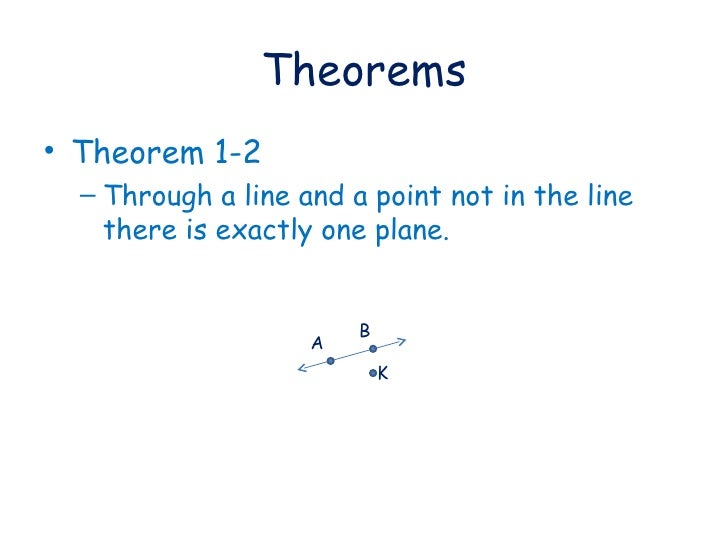
Math, thank you very much for answering my past question about "theorems" and "postulates". This is the key idea that any student should come away with, and is why I am covering this answer first: Whatever starting point an author chooses, once the theorems have been proved it doesn’t matter whether a given fact was stated as a postulate or as a theorem, it is still equally true.Īlona had a follow-up question: Dear Dr. In other words, in answer to your question as to whether "theorem" or "postulate" really matters: it matters in presenting a specific systematic treatment of geometry, but not in USING the facts you learn, which are true one way or another regardless. You can take them however your own text presents them but be aware that they are all really equivalent facts, and which you take as postulates doesn't affect how you use them, which is what really matters.

It is also possible to define congruence in such a way that all three can be proved from some more basic postulate about congruence. It is possible to take ONE of these congruence facts as a postulate and prove the others from it (so they become theorems). I prefer the latter approach, but I can understand the "cheating". Others use a good, small set of postulates, but state some theorems without proof, explaining that the proof is beyond the level of the text. Many texts "cheat" a bit by using as postulates anything they don't want to bother proving (probably because the proofs are difficult and wouldn't really help their students understand the subject). The best way to do geometry is to start with as few assumptions as possible, and prove everything from those. It's a matter of how an author chooses to present geometry to his audience.ĭifferent geometry texts choose different starting points. Having already written about this, I gave Alona a succinct response, also referring to a page we looked at last time, and the page we’ll look at below: These facts CAN be postulates, but they don't have to be. A theorem is something you can prove, based on your postulates.Įvidently Alona’s textbook calls these postulates, while Doctor Jubal’s calls them theorems. A postulate is something you just state and assume to be true. But Alona is probably referring specifically to this page from 2001: AAA, ASS, SSA TheoremsĬan you please tell me in detail why the ASS, SSA, and AAA postulates can't be used to determine triangle congruence?ĭoctor Jubal started his answer by saying, Just a side note: the SSS, SAS, and ASA triangle congruency theorems are theorems, not postulates. Do the words "theorem" or "postulate" really matter? I am a high school student studying geometry right now and your answers to my questions would be a great help for me.īelow, we’ll be looking at one of the earlier answers referred to here. But, why do books and even teachers still teach students like us SSS, SAS, and AAS "POSTULATES".

Sorry, I know you've answered questions about the topic many times but as I was reading the answers I realized that you were trying to say that SSS, SAS, and AAS are really theorems because they were proved (theorems need proofs). If SSS, SAS, and AAS are theorems, why do other books still use them as postulates? And can you show me the PROOFS that were used for these theorems? :)

First, from 2006: Theorems and Postulates We’ll first look at a simple version of the question, and then one that takes us deeply into geometry. Often, this question is mixed together with a different question: Why do different texts give different lists of postulates, so that what one calls a postulate, another calls a theorem? How can we live in a mathematical world where the very foundations keep changing? My book calls them postulates Last time we looked at the question of why we have to have postulates, which are not proved, rather than being able to prove everything.


 0 kommentar(er)
0 kommentar(er)
